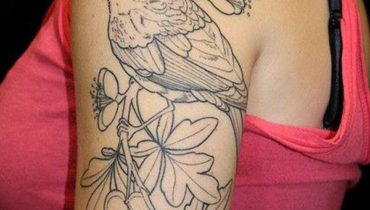Seeing your tattoo not coming out as per your expectations is incredibly disappointing. At this point, you might not have an idea about how to get rid of an unattractive tattoo design. The waste of time, money, and effort also become a matter of concern. And, you may think to compromise on the situation.
It is true that accepting an unwanted tattoo is a tough nut to crack. Because it was meant to be flaunted, however, you would need to hide it now.
You will be delighted to find that a cover-up tattoo can help you if you messed up inking your favorite design. The process and cost will be based on the design, expertise of a tattoo artist, and the amount of rework required. This article features each aspect associated with the cover-up tattoo.

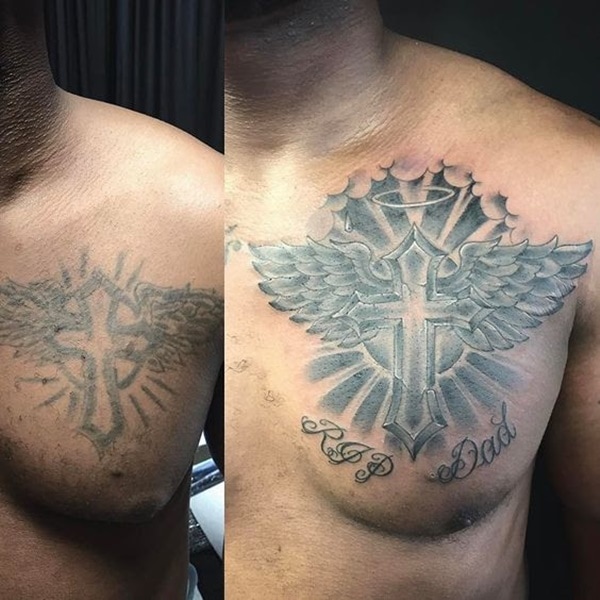

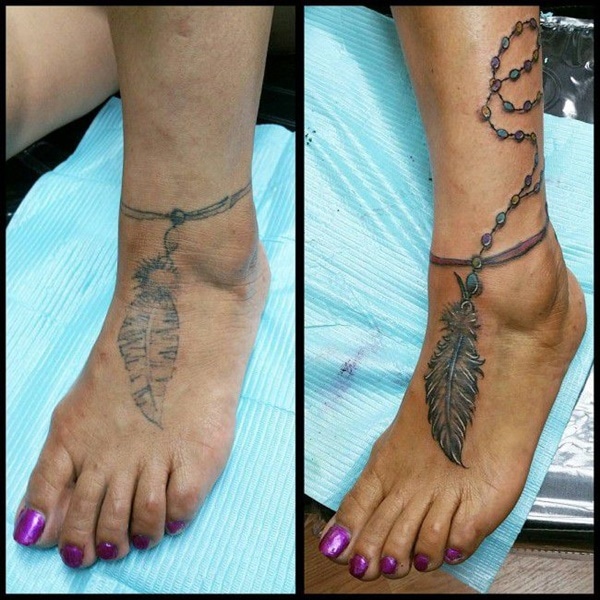
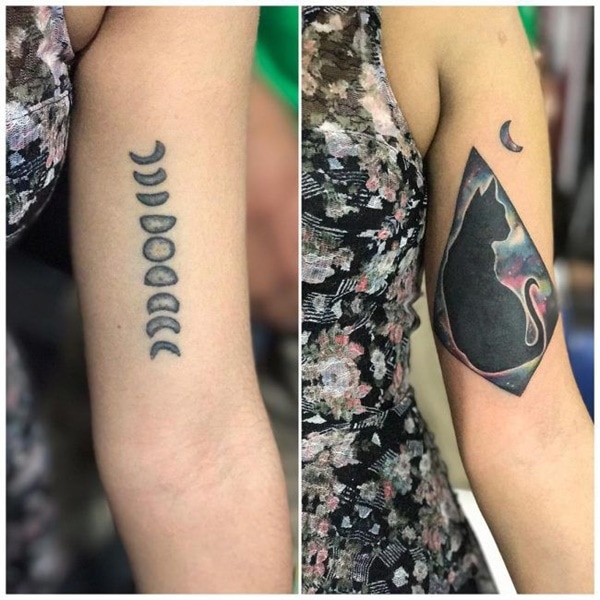



What is a Cover-up Tattoo?
Contents
Covering up a tattoo follows a procedure where your previous and unwanted tattoo is replaced with a new one. In most cases, the method can do the job without breaking your bank.
You can also opt for a cover-up tattoo if your old design is fading. Light or faded tattoos are quite easy to work on using dark ink.
All you need is to pick an idea and schedule an appointment with your tattoo artist. The artist will further guide you which you should consider.
Moreover, the choice of a design to cover your old tattoo makes a significant difference as well. It is also likely that certain designs do not seem the best way to fix your problem.




How does Cover-up Work?
The ink was deposited at least one millimeter beneath your skin into the dermis – a layer below the epidermis (the skin) when you got the first tattoo. In the process of the cover-up, the ink is deposited again in the same dermis where the ink from the previous tattoo is already presented.
The pigment of the new ink does not go on top of the pigment of your old tattoo. These two colors get combined to create a new color. There are chances that dark inks will dominate the mixture. For instance, blue and red together turn into purple underneath your skin.
Moreover, most tattoo artists consider black as the most effective color to cover up almost any old tattoo. Many people do not prefer black ink all over the design but it sounds a lot better than living with the terrible previous tattoo.
When an artist is working to conceal a tattoo, the focus is usually on the color of an old tattoo and how to incorporate it into new ink. Certified tattoo artists begin working after chalking out a strategy to place the new design and color cautiously on the previous tattoo. Not to mention, cover-up will allow showcasing your tattoo in public.
Colors Use to Conceal a Tattoo
Although redoing an old tattoo can become a pain in the neck, sufferers of a horrible tattoo experience prefer to give it a chance. If you are the one, learning about the colors use in rework seems a wise idea. It will also help make a decision.
- Black is a standard color each tattoo artist uses in the cover-ups.
- You can also find oranges, greens, blues, magentas, and browns when it comes to camouflage.
- Dark shades of the same color can cover up your tattoo in no time.
- New inks when combined with old tattoo ink create a brand new color.
You can also see the artist experimenting with the colors and clever placement of the design to hide the design of an unwanted tattoo. Using light shades has also become a common practice to cover the uneven strokes of your old tattoo. You will be pleasantly surprised to find that your tattoo artist can replace light blue with royal blue or purple or lime green with emerald green in no time.







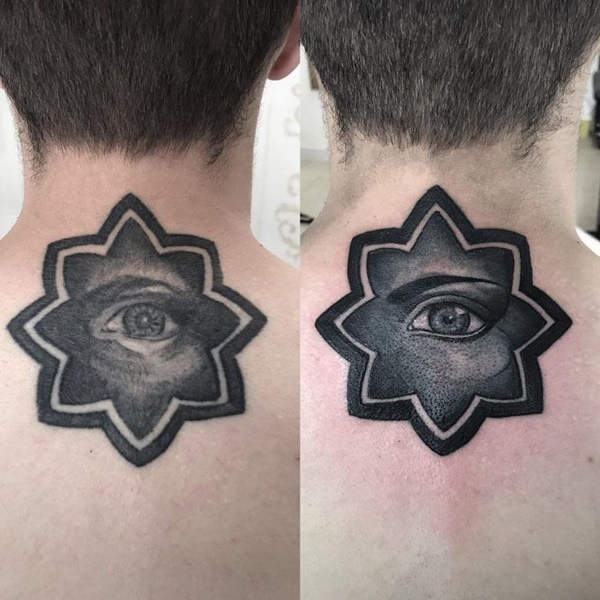
The Process of Cover-up
The procedure of a cover-up design involves the following:
- Your tattoo artists begin the procedure placing a tracing paper over the previous design to outline the significant features of your old tattoo. This step is crucial as it will help find a reference for the parts of the tattoo that will get maximum coverage.
- The artist will put the outline under the light and place another thin piece of tracing paper on its top.
- The cover-up process will start via working on the fainted outline of your old tattoo to conceal that area.
Furthermore, a certified cover-up tattoo artist knows how to incorporate the old design into the new one – so there are fewer chances that the artist will obliterate the design. For instance, an expert in the field will develop scripting into flowing vines or stalks.
In cover-ups, the artist draws plenty of attention to the design via crafting interesting patterns around the unattractive areas of your old tattoo. This trick is likely to keep all the eyes on the new design.
Moreover, in most cases, the tattoo artists recommend creating around 30% larger new design as compared to the first tattoo. This step ultimately camouflages the old design. Plus, light shades are used to neutralize the skin that showcases only cover-up tattoo is imprinted on the skin. If done correctly, these steps conceal the area removing every inch of the previous design.
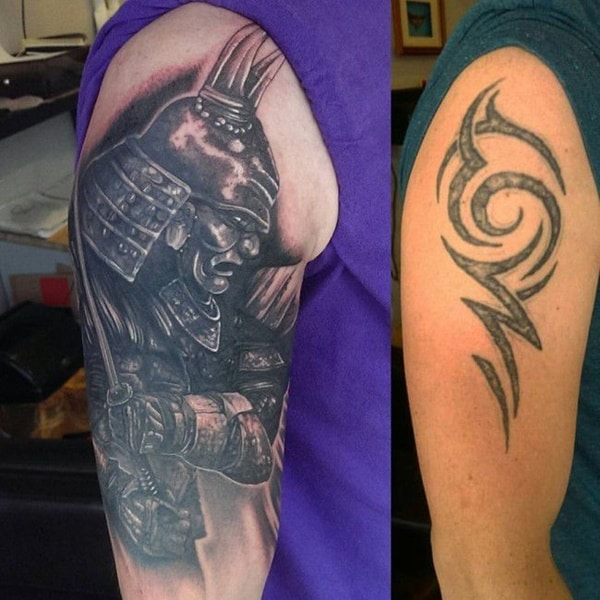
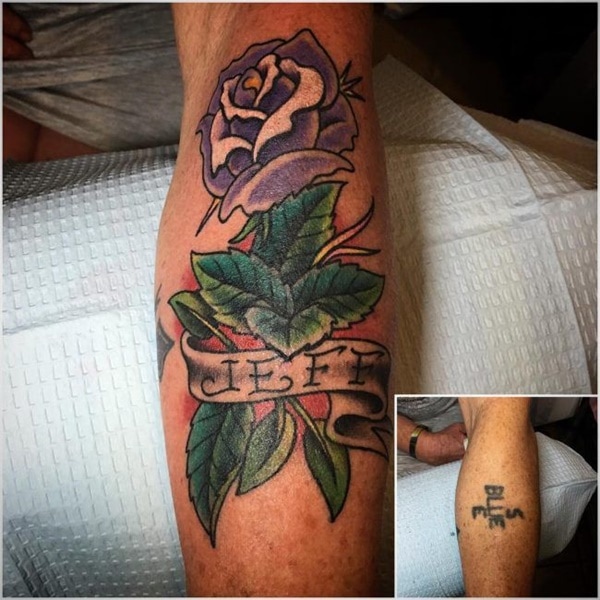
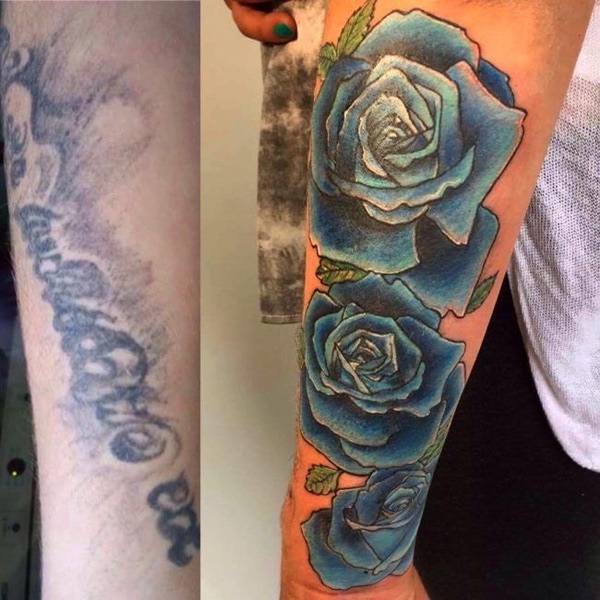


Also See:
- 55+ Amazing Heartbeat Tattoo Designs You Should Consider
- 255+ Cute Tattoos for Girls 2018: Lovely Designs with Meaning & Tips
- 75 Brilliant Rosary Tattoo Ideas and Their Meanings
- 125 Fantastic Rib Tattoo Ideas (with Meanings)
- 125+ Butterfly Tattoo Ideas for Depicting Transformation
Can Cover-up Change Tattoo Color Only?
It is true that most of the tattoo lovers like the design but struggle with its color. Choosing the right color palette can be confusing due to plenty of light and dark shades. People who only want to change the color think there are no options available in this context. Contrary to this, you can always go to your cover-up tattoo artist just to fix the shades of your tattoo. It seems a risky task but a certified artist can manage it singlehandedly. Plus, you should learn that not every shade can turn to a new color. However, there is the possibility of transforming lighter hues into the dark, such as:
- You can turn red to brown
- Pink blends in well with magenta
- Blue mixes with purple
- You can always change yellow to green


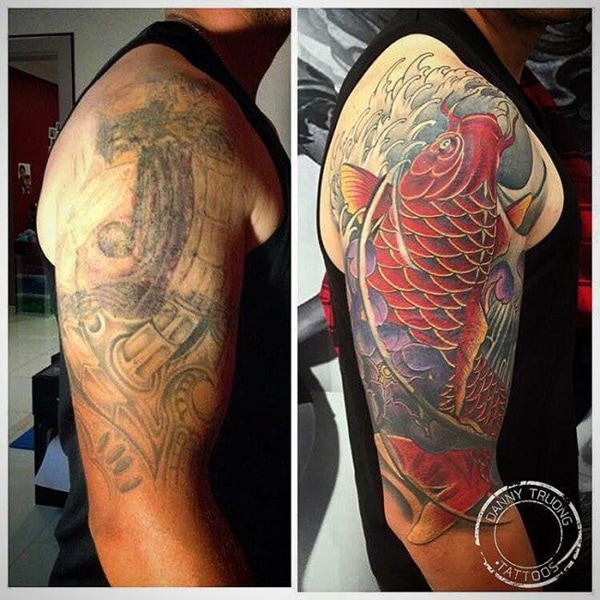

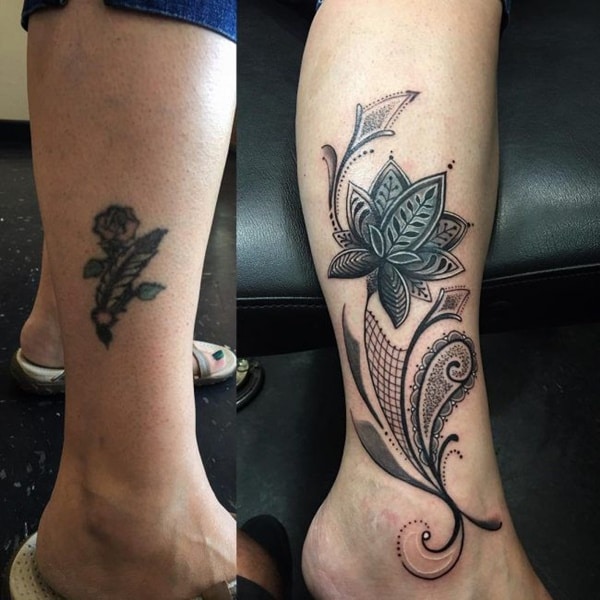







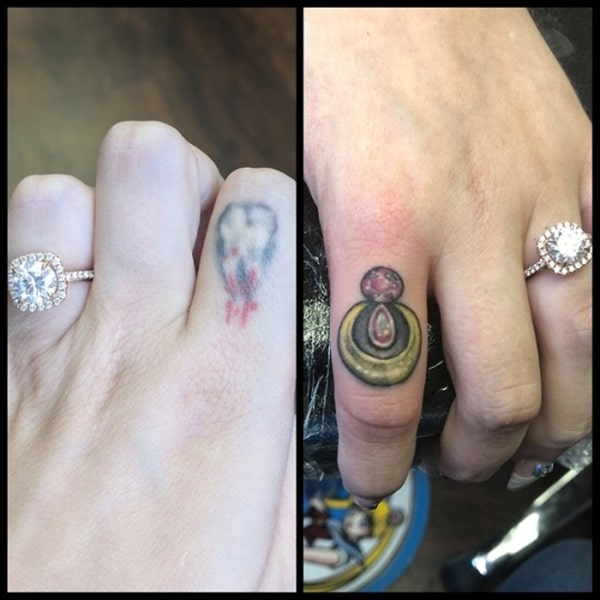








Things to Remember before Opting for a Cover-up Tattoo
Covering up your mess with a new design seems a smart option. We suggest taking note of certain pointers to get the desired outcome.
Tattoo Size
The new or cover up design will always be bigger in size. There are possibilities that you will not get the size as per your choice. However, with the big portrait of a dainty tribal design, you will have an opportunity to hide an unattractive design completely.
It would not be wrong to state that bigger designs allow you to go for drastic style and images. And, if you are still unsure about inking the large area of your skin, do not hesitate to discuss it with your artist to find the top-notch design.
Tattoo Colors
The color palette used to cover old tattoo designs ranges from blues to browns to blacks. When it comes to concealing existing dark ink, shades like oranges, reds, and yellow do not provide the right amount of coverage. Tattoo artists use bright colors to fix designs drawn with bright colors. You should opt for bold and dark color options to camouflage your previous tattoo.
Dark Color Might See-Through
If your old tattoo is dark, cover-up ink might see-through it. In most cases, tattoo artist uses excess dark ink to achieve the effect they want. Inks like blue or black will appear on the cover-up tattoo as compared to the shades of white or yellow. It is worth noting that using light color with high density can create a significant effect on the cover-up tattoo.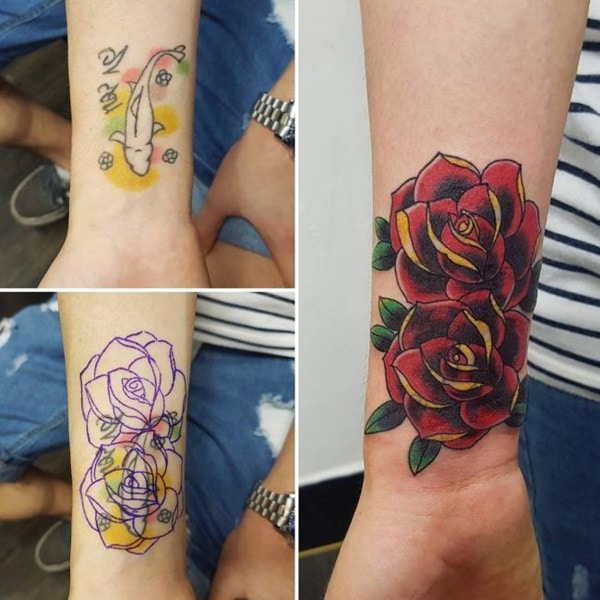
Old Tattoos are Easy to Cover
The age of your tattoo matters as well. It is evident that tattoos fade over time. This is possible because the ink of your tattoo is likely to break down as time passes. Red and yellow colors are prone to quick fading whereas shades like black and dark blue stay for an extended time period. Concealing a years old tattoo is less time-consuming as compared to a brand new one. And, old designs do not show through the cover-up a design like new ones do.
Design of your Tattoo
When opting for a cover-up, take note that the design of your tattoo matters a lot. Not every design in easy to camouflage. For instance, tribal designs contain a slew of major or minor details which might get difficult to erase whereas a small tattoo with some symbol is quick to conceal. To avoid this hassle, try to choose a moderate tattoo design when going for a tattoo for the first time. So, you can get rid of it in less time if it would turn into a mistake.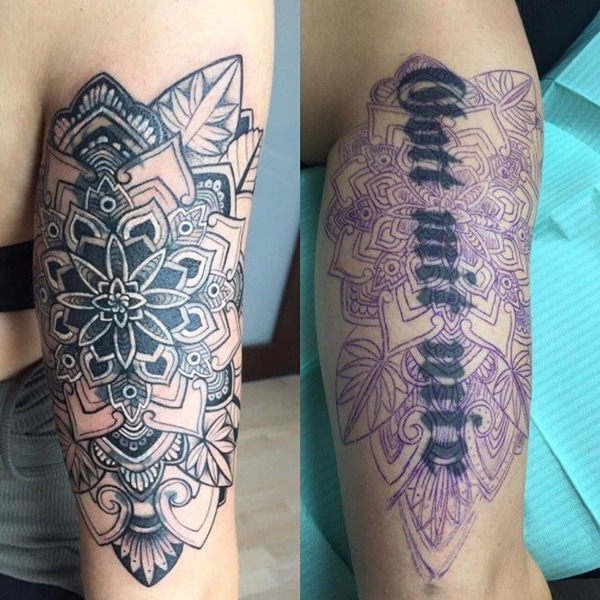










Cover-up is not a New Tattoo
Concealing a tattoo is based on how much you want to cover, to some extent. However, covering your tattoo does not indicate getting a new tattoo. With the help of your tattoo artist, you can surely find a way to replace your old design with a new one. You cannot call it a new tattoo as some parts of the previous tattoo might see-through it.
Find an Experienced Tattoo Artist
It is entirely up to you whether you go to your previous tattoo artist or find a new. We, however, suggest opting for the one who has expertise in cover-ups. This process seems time-consuming and requires efforts. This is why finding an artist possessing the skills to replace your regrettable design with something interesting is essential. Therefore, invest some time and conduct a thorough research before finalizing an artist for concealing.
Tricks Use in Cover-up Tattoo
No question reworking on a completed design requires time and effort alike. It would be wrong to claim it a risky job. However, various certified cover-up tattoo artists have found quick and effective ways or tricks to accomplish the desired outcome in a short time span. Some of the common tricks are:
- Keeping cover-up design as close as the old one
- Strengthening weak lines or incorporating features
- Opting for certain illusions to improve the overall look of the tattoo
- Correcting spelling in a tattoo
- Fading a tattoo via removing excess ink
- Drawing white-based or backed tattoos, it requires short sessions to place white ink over the ink of the previous Each session lightens your old tattoo up to 10% which can reach 30% after some sessions.

















Tips to Maintain your Cover-up Tattoo
Redo or rework may seem a fantastic way to get rid of embracing tattoo design – but it comes with various risks. Tattoo artists reveal that around 77% of people decide to conceal their old tattoo for several reasons including an unattractive outcome. Deciding which part of your body should get a tattoo, style, type, or color beforehand can save you from the hassle. Moreover, once you conceal your previous tattoo, it is necessary to take extra care of it to boost the healing process.
Here is what you can do.
Listen to your Tattoo Artist
You can take extra care of your redone cover-up tattoo via following the artist’s advice. Try to follow each step of the instructions not only to heal the tattoo faster but to avoid bacterial infection as well.
Avoid Wiping your Tattoo
It is common for a cover-up tattoo to itch when you take a bath or shower. If you feel itch (even the intense one), do not wipe with the regular towel. Wiping your newly concealed tattoo with a towel will tear the treated skin. Try to pat your skin using a tissue, soft cloth, or let air dry it.
Use only Antibacterial Soap
Concealing a tattoo is quite similar to getting a new one when it comes to taking care of it. You should only use antibacterial soap to prevent bacteria from entering the wound. Using a regular soap in this context cannot stop bacterial infection which leads to a serious of problems associated with skin.
Wash your Tattoo after a Few Hours
Your tattoo needs to stay clean 24/7. So, when you remove the bandage, it is time to give your tattoo a good rinse. Use only lukewarm water and prescribed products to avoid any adverse effects.
Avoid Scab Formation
Dabbing your redone tattoo with a soft cloth will not dry it completely. That is why patting is recommended as it keeps your tattoo moist. If you dry out the tattoo, scabs will develop on it and take excess time to peel off.
Use Moisturize
Tattoo artists recommend keeping your tattoo moisturized. Despite that, you should not go overboard when moisturizing the newly concealed tattoo. It needs to breathe to heal adequately and on time.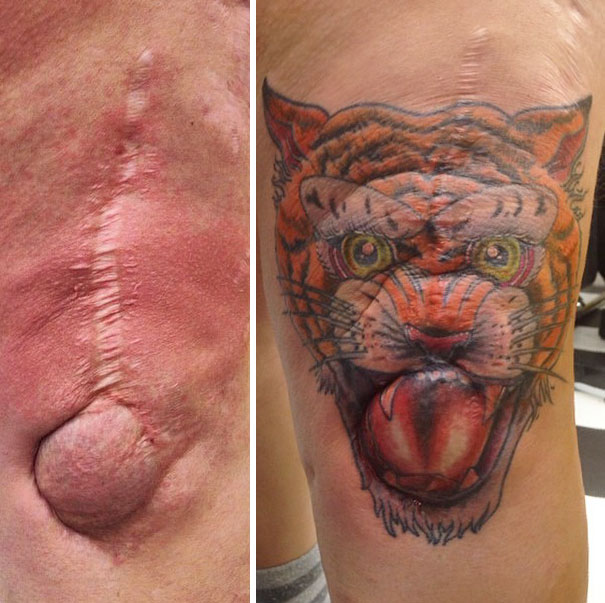
How to Deal with Itchiness
After a day or two, expect a thin layer to peel off from the tattoo. This procedure will make your skin itchy. Tattoo artists strictly prohibited to scratch your tattoo in this condition. You should use baby oil or milk cream instead. These products will not only keep your tattoo moist but relief your itch instantly.
Avoid Excess Water
You need to control the pool and sauna until the concealed tattoo heals. Moreover, avoid soaking yourself in the pools or baths as it may cause infection on the treated skin. You should opt for warm showers to speed up the healing time but be sure not to spend more than 15 minutes in the shower.
Avoid Sunlight
Sunlight causes incurable damages to your tattooed skin. So, not exposing it to the sun seems a smart idea. Try to stay indoors as much as possible. Various tattoo artists agreed on the fact that ultraviolet (UV) rays hinder the tattoo healing process.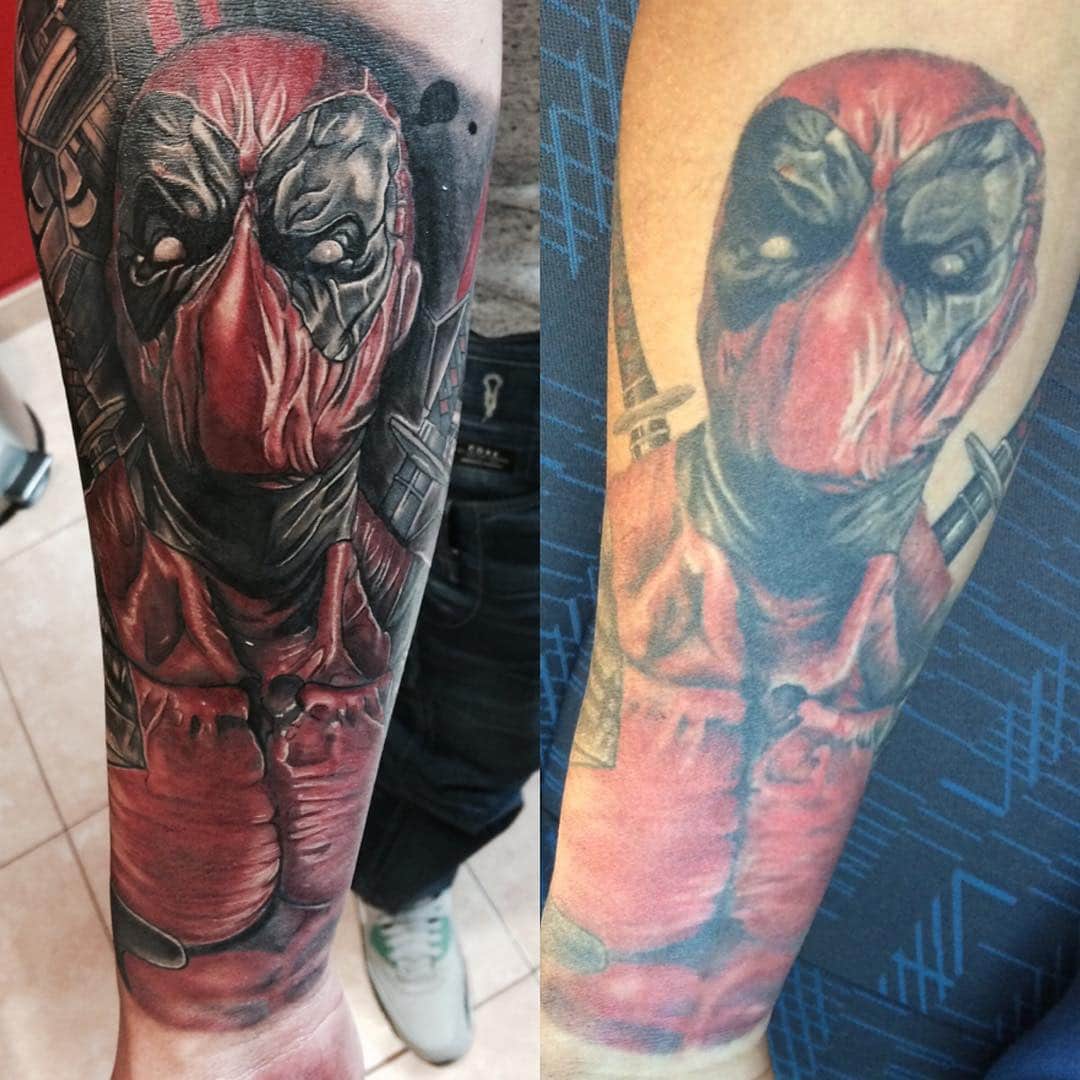
Be Patient with Healing
Your camouflaged tattoo cannot heal overnight. It solely based on the factors like size and design. Simple style or type usually takes a week whereas complex design with plenty of details may take several months to heal. You need to follow instructions carefully during the healing time to get keep adverse effects at bay.
Go for Touch-ups
If your tattoo loses ink after a day or two, contact your tattoo artist immediately. The studio should do it for free if it happened within a few days. Touch-up is necessary to retain the freshness of your tattoo. You can even go after weeks or months to enhance the colors and design.
Does a Cover-up Tattoo Fade?
Just like you get a tattoo for the first time and it fades after some time, cover up loses the shine and color as well. Various people reveal that their cover-up tattoo does not look striking and fresh like it does months ago – this occurs due to fading.
Moreover, the colorful cover-up tattoos are prone to fading. If you do not take good care, these colors will fade quickly. Tattoo artists recommend light shades like lime green and pink tend to fade faster than the purple, black, and royal blue.
People who have opted for watercolors and pastel encounter the similar problem as well. You need to remain cautious for shades like gray, purple, black, and blue as these colors get lighter over the time.
Here are some factors that contribute to the fading of the cover-up tattoo.

Quality of Ink
The longevity of your tattoo depends on the quality of your ink. If the tattoo ink contains low-quality components, your tattoo will not remain fresh and striking for an extended time period. Moreover, diluting the ink excessively also results in tattoo fading which inexperienced tattoo artists do not consider.
Light ink fades faster. And, to avoid the hassle, you should opt for a cover-up design containing lots of dark colors, textures, and details. We suggest avoiding hues of pinks and yellow to make the most of your cover-up tattoo.
Plus, incorporating highlights to your design does not sound a smart idea either due to the same reasons. Therefore, do not hesitate to ask about the quality of the ink your artist would use to get the long-lasting cover-up tattoo.
Placement of a Tattoo
The placement of your cover-up tattoo matters in this context. Tattoos imprint on certain parts of your body such as the inner thigh, bicep, in-between fingers is prone to fading. This is possible because these areas rub against other parts of your body.
If your tattoo is placed on a shoulder, it is likely that the design will lighten over the time due to constant contact of the clothing. This consistent rubbing of clothing causes your cover-up tattoo to fade gradually which becomes apparent after some time.
Quality of Healing
The fading of a cover-up tattoo is associated with the safety precautions. If you do not ensure preventative tips, your tattoo will lighten in a few months. Also, in the first few weeks, allow the ink of your tattoo to settle into the place to alleviate fading of the tattoo in future.
Do you need to wrap your Cover-up Tattoo?
It is quite confusing to figure out whether wrapping your cover-up tattoo is necessary or not. Various tattoo artists revealed that in most cases, cover-ups require significant rework. This kind of concealing is often considered similar to getting a tattoo for the first time.
The sole purpose of wrapping your tattoo design is to protect it against bacteria and germs. These elements can cause mild to severe skin infections during the healing process which you cannot afford.
Tattoo artists recommend wrapping your tattoo until you can clean it yourself. The ideal estimated time for wrapping are 4 – 6 hours at least – then wash it off with warm water and antibacterial soap.
Bottom Line
Getting rid of a regrettable tattoo design has become possible with concealing. So, opt for a cover-up and make a difference.

